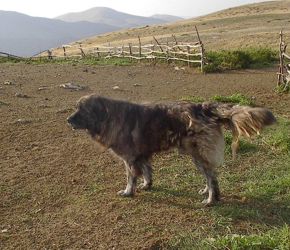I thought I'd start a thread on the SHARPLANINEC Dog..
There has been a lot of interest about this beautiful breed the SHARPLANINEC and I think we should learn more about it and the History of this Macedonian Sheppard..
Why I say Macedonian SHARPLANINEC is because like anything that has Macedonian is controversial with our Neighbours..and the origin of the breed remains controversial
The Albanians call it ILLYRIAN SHEPHERD and like to claim the SHARPLANINEC as theirs , the Serbs call it Yugoslavian Sheppard
Even the Greeks think it's a Greek dog, (which is funny in so many ways)..

I would like people's opinions, and any information they have on this Dog , including any experience with this breed
Mind you I am no expert and never owned a Sarplaninec so I would like to know more about them..
There has been a lot of interest about this beautiful breed the SHARPLANINEC and I think we should learn more about it and the History of this Macedonian Sheppard..
Why I say Macedonian SHARPLANINEC is because like anything that has Macedonian is controversial with our Neighbours..and the origin of the breed remains controversial
The Albanians call it ILLYRIAN SHEPHERD and like to claim the SHARPLANINEC as theirs , the Serbs call it Yugoslavian Sheppard
Even the Greeks think it's a Greek dog, (which is funny in so many ways)..

I would like people's opinions, and any information they have on this Dog , including any experience with this breed
Mind you I am no expert and never owned a Sarplaninec so I would like to know more about them..
















Comment